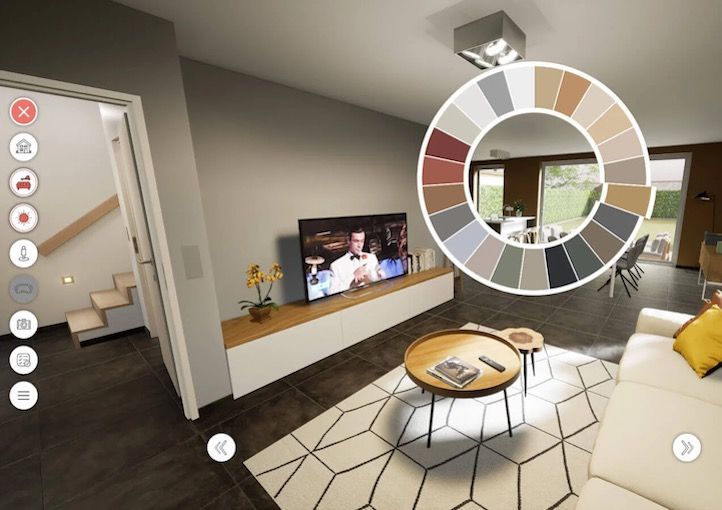7 Things to Look For in an Interactive 3D Streaming Platform

Once you’ve identified interactive 3D streaming as a valuable enterprise tool, it’s time to find a vendor. The trouble is interactive 3D streaming is an emerging technology, so it’s hard to know the right questions to ask a vendor. To get you started, here are 7 questions you should ask the interactive 3D streaming providers on your shortlist.
Is your service fully managed?
While interactive 3D streaming is now possible, it’s not necessarily easy. There are dozens of interrelated processes that must be managed to deliver a seamless experience. The substantial amount of expertise needed to properly oversee these processes is rather niche. So it’s best to work with a fully managed service.
A fully managed interactive 3D streaming service cultivates the relationship with your cloud provider, handles the coordination of streaming session connections, schedules user sessions to available servers, sets up your chosen streaming application or protocol, ensures your proprietary data is protected, and more. A non fully-managed provider leaves you to fend for yourself.
Read Next: Should you build or buy your own interactive 3D cloud streaming platform?
The best way to understand the difference is to think of utilities. When you pay for electricity, it’s fully managed. The electricity works at your office and you plug in computers and equipment.
If it weren’t fully managed you’d need to set up the infrastructure to get the energy from the power plant to your office and figure out how to make it work in your building.
Definitely not what you went into business to do all day.
How do I deploy my interactive, real-time 3D models?
If your vendor says they are fully managed, then the answer is simple: You give them your real-time 3D models and their system sends you a link to your streamed experience in return.
Behind the scenes, the platform does the work turning your models into an easily streamed interactive 3D experience that requires no additional installations or software.
For example, PureWeb links infrastructure to applications through its fully-elastic, microservice-based cloud platform. This platform sits atop various AWS web services, including G3 EC2 instances. The relationship with the cloud provider – as well as the associated configurations and implementations – are fully managed.
Following the set-up, a company’s 3D models are directly fed into PureWeb’s automated build pipeline. By integrating the PureWeb SDK into the 3D model, a ready-to-stream version of the model uploads directly to the cloud platform.
Next, PureWeb’s technology creates a deployment configuration for the model and makes critical determinations about deployment and capacity. Specifically, this means indicating which global AWS region should host the model as well as setting the elastic scaling policy.
Finally, the customer receives a URL for easy access to their streaming model, and ability to embed the 3D application onto any web page.
Can your platform handle data-intensive, photorealistic 3D models without compromising performance?
Interactive 3D streaming is not just for distributing experiences to customers and prospects. It’s also for collaborating on projects in real time. That said, companies struggle to transfer data-intensive, high fidelity 3D models to their customers easily. Instead, they rely on dedicated workstations.
To deliver the most return on investment, a cloud streaming solution must easily transfer computer-aided design (CAD) models and models rendered in game engines like Unreal or Unity, without stripping away quality.
Be sure to check that your chosen cloud streaming provider offers interactive 3D streaming that offers a reliable and stable transfer of high fidelity 3D models.
Can your real-time 3D streaming platform deliver content to mobile phones and tablets?
A cloud platform for real-time 3D streaming must deliver high fidelity content to mobile devices, tablets, and consumer-grade laptops for three main reasons:
- Half of consumers shop from their mobile device, making interactive 3D content on easily accessible devices essential for marketing and sales
- Employees want digital first, mobile training options to supplement their existing skills
- Remote working is becoming the new normal, and specialists working with data-intensive 3D models need the tools to also work from home or while travelling
Your cloud streaming provider should help you easily deploy interactive 3D models to mobile devices, and they shouldn’t refer you to tools like WebGL to do it.
For instance, Unity offers one of the easiest ways to create photorealistic 3D web content using WebGL. But Unity doesn’t currently support the use of WebGL for mobile browsers. In the rare case a Unity-built project deploys on mobile devices using WebGL, the device is high quality rather than the standard smartphone a consumer would use. Overall, it simply isn’t a reliable deployment option for an enterprise unveiling a global campaign.
So it’s important that your cloud streaming provider offer reliable mobile deployment, so it can make experiences as consistent as possible – whether the experience is through a computer with a high-powered GPU or the average smartphone.
Does your platform transfer data through the cloud or just the rendered images?
Your enterprise needs to know how your cloud streaming provider manages data. One shortcut for gauging an interactive 3D streaming service’s level of data security is asking: During an interactive 3D stream, do you transfer all the data through the cloud or just the rendered images?
The right answer? Just the rendered images. If the platform transfers source files as well, an unscrupulous recipient can gain unauthorized access to your company’s proprietary data.
The ideal solution is a platform that keeps source files secure at the server level, conducts the rendering there, and transfers the rendered images through the cloud.
Do you have integrations with game engines like Unreal Engine and Unity?
Game engines are a popular tool for rendering interactive 3D models and experiences.
Architectural firms, engineering firms, digital agencies, automakers, and more use game engines to transform CAD models into photorealistic models for marketing, product development, sales, and more.
But many of these users encounter workflow blockages, because deploying their 3D creations or sharing them with collaborators is data intensive. 3D models aren’t as easy to share as a video or a Google Doc.
For this reason, your 3D streaming platform must integrate with popular game engines like Unreal and Unity to enable easy distribution. You can easily deploy your game engine creations to any device without needing to share the source files. For another, your team can easily share 3D models with collaborators by streaming them into a meeting space, like PureWeb’s Engage tool, which requires no downloads or installations.
For example, an Unreal Engine integration allows teams to easily package and deploy Unreal Engine Pixel Streaming applications onto the PureWeb cloud streaming platform. Once deployed, creators can easily manage these application deployments and massively increase the content’s reach by adding a new delivery mechanism for their games. In sum, teams achieve mass publication without mass sharing of source files.
Related Read: How to use Pixel Streaming for enterprise level projects
How close is your relationship with cloud computing companies, and how quickly do you offer support for new instances?
Cloud providers like AWS update their instances regularly. This means that your 3D cloud streaming provider must be able to quickly introduce support for these new GPUs. Oftentimes, this is only possible if the streaming provider has a close relationship with the cloud computing company.
For example, when AWS publicly released its new G4 series of instances featuring the Nvidia T4 GPU, support for it was already built into PureWeb’s cloud streaming platform thanks to our close relationship with AWS’ GPU team. Consequently, this reduced costs for customers and empowered them to cloud stream real time, ray traced content before non-PureWeb users.
Can your platform deploy multiple users to the same high performance GPU cloud servers?
Cloud streaming cost can quickly add up if your resources aren’t managed effectively. Ask your cloud streaming provider how their solutions ensures scalability and cost-effectiveness. Ideally, their platform can deploy multiple users to the same GPU. This way, cloud computing costs are, at the very least, halved and scaling capabilities doubled. Meanwhile, companies running global campaigns or cross-border interactive 3D training programs need a platform that assigns multiple users to individual instances.
Notably, PureWeb’s cloud streaming platform allows 3D content creators to deploy multiple users to the same high performance GPUs for both Unreal Engine and Unity 3D applications.
Whether you conduct one-on-one meetings with vendors or execute a full RFP process, asking potential cloud streaming vendors these specific questions is a smart first step.
Have more questions about how interactive 3D streaming works? Book a demo with a member of the PureWeb today or see our PureGuide.


